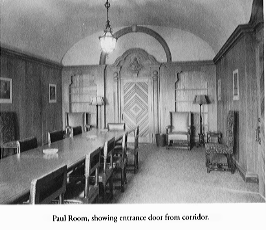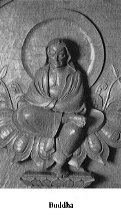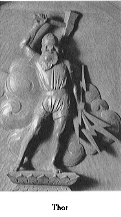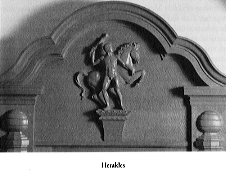Dartmouth College Library Bulletin
IN a letter dated 24 September 1937 to Mrs. Helen L. Paul of Marquette, Michigan, the President of Dartmouth College, Ernest Martin Hopkins, wrote 'When Baker Library was built . . . the Trustees deliberately planned to leave certain rooms available for development as memorials.' A reason for mentioning this was that soon after his death on 23 May 1937 Mrs. Paul had proceeded with plans to establish a memorial to her late husband Carroll Paul 1903, Thayer 1904. After a visit to the College by Mrs. Paul and subsequent discussion in an exchange of letters of a number of suggestions with Librarian of the College Nathaniel L. Goodrich and President Hopkins, it was decided to establish a complex of rooms for use by students enrolled in the Senior Fellows program.
The Trustees of the College had established, in April 1929, at the initiative of President Hopkins, the Senior Fellowships of Dartmouth College. In June of each year five members, generally, of the junior class were to be elected as Senior Fellows for the following academic year. 'During the tenure of his Fellowship, the Fellow shall be given complete freedom to pursue the intellectual life at Dartmouth College in whatever manner and direction he himself may choose. He shall not be required to attend classes, though he may have the privilege of attending any; he shall not be required to take any examinations; and he shall not be required to pay any tuition fee to the College. At the end of the year of his Fellowship, the Fellow shall be given his degree in course.' With a number of changes and modifications the program is still in effect.
Carroll Paul, a personal friend of President Hopkins, had followed with keen interest the establishment of the Senior Fellowships program and had become a great supporter of it. As a civil engineer in government service, including the United States Navy, Carroll Paul and his wife and children led a peripatetic existence in the United States and abroad until his retirement from the Navy in 1922 with the rank of lieutenant commander.

Under supervision of the College architect Jens Fredrick Larson, a number of smaller rooms, part of the top (second) floor of the south-west wing of Baker Memorial Library, were converted into a suite. A large (40 X 20 feet) central seminar (conference) room is flanked by six private studies (two double in size), which can accommodate as many as eight Senior Fellows or other scholars. The large room has oak panelling of walls and friezes; the studies have panels of pinewood. The ceiling is a simple plaster arch.
The Paul Room is not only dedicated to the memory of Carroll Paul; the honor is shared by his father Henry Martin Paul 1873, a paternal uncle Isaac Paul 1878, and Isaac's son Philip B. Paul 1906. A tablet, affixed over the entrance door, bears the names of this foursome; a photograph of each hangs inside. Richard F. Paul 1911, another son of Isaac, was still living at the time the room was dedicated. The room was first used for its intended purpose by the Senior Fellows of 1938.


The pediments over the entrance and over each of the two doors to the double studies have a handcarved relief depicting Buddha, Thor, and Herakles, respectively. A plain halo surrounds the Buddha, seated on a lotus throne with lotus flowers and buds rising from the base. A full robe over both shoulders hangs in loose folds, also covering arms and hands entirely, so we do not know in what posture the hands are held. The right leg is held crossed over the left knee.
The Nordic mythological figure of Thor raises Mjolnir, his hammer, with the right hand, while the left holds a bundle of thunderbolts. To use the hammer effectively, Thor had to wear iron gloves (not visible here) and a belt of power (Megingjardir).

One of the twelve labors of Herakles concerned the taming of the man-eating horses of Diomedes of Thrace. In the woodcarving Herakles is shown (as in the original decoration of the Temple of Zeus at Olympia) subduing one of the horses by threat of a club.
The artist who made the woodcarvings, Edgar Keen (1896-1964), was born in Cheltenham, Gloucestershire; Keen's hometown was Chipping Campden, a picturesque village in the Cotswolds, where in 1912 he became apprenticed to Alec Miller (1879-1961),a renowned sculptor from Glasgow who had joined the Guild of Handicraft, originally of London, when it had moved to Chipping Campden, a move inspired and directed by C. R. Ashbee. Keen's apprenticeship was interrupted by service in the British Army in World War I. Miller taught Keen the secrets of sculpting in all types of wood and stone. Keen left for America in 1924 and lived and worked in Philadelphia, Boston, and the Middle West before settling in Warner, New Hampshire, as an independent craftsman. He was director of The League of New Hampshire Arts and Crafts from 1936 to 1938; he taught courses in woodcarving in various places, including Dartmouth College. His works, mainly for churches and public buildings, are represented throughout England and North America. Examples include carvings in the Santa Catalina School Chapel, Monterey, California; the Cathedral of Saint John the Divine, New York City; the Hanson Place Baptist Church in Brooklyn, New York [now the Hanson Place Seventh Day Adventist Church]; the Presbyterian Church, Pittsburgh, Pennsylvania; and the Concord Public Library, New Hampshire; among others.
Among the friendships Edgar Keen formed at the College was a close one developed with Robert Chamberlain Strong (1901-1946) 1914, executive assistant to President Hopkins from 1916 to 1933 and Dean of Freshmen and Director of Admissions from 1933 until his sudden death in 1946. Strong, an ardent craftsman, was active in the statewide and local activities of the League of New Hampshire Arts and Crafts, being its director for several years. He also led with greatenthusiasm a crafts program for the Hanover community, known as 'Hanover Home Industries'; in addition, Strong was for many years advisor to the College's student workshop. The Robert C. Strong Memorial Building in Hanover, named in his honor, houses the renamed League of New Hampshire Craftsmen.
Dorothy C. Strong, widow of Robert Strong, recalled that when classes in arts and crafts, organized by the League, were held in Hanover 'the class Bob inevitably chose was that in woodcarving taught by Edgar Keen.... Ed ... was a man who was a true artist and skilled craftsman--a genius with tools--and a philosopher, as well. Bob was always very modest about what he had carved of his class objects for the suspicion was that, as the talk flowed, the teacher absent-mindedly kept on carving for the pupil.'
Acknowledgments: We thank for help in preparation of this article Helen Keen Murray of Tucson, Arizona, daughter of the sculptor Edgar Keen; Dorothy C. Strong, who told about the friendship of Edgar Keen with the Strong family; and Rebecca Courser of the Warner Historical Society. Palmer room detail photographs by John Gilbert Fox